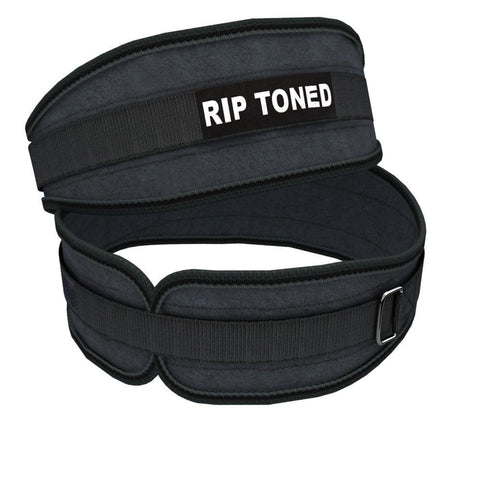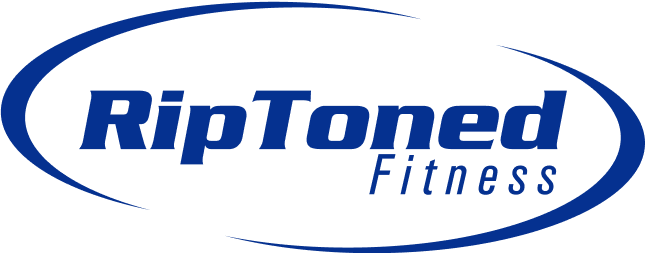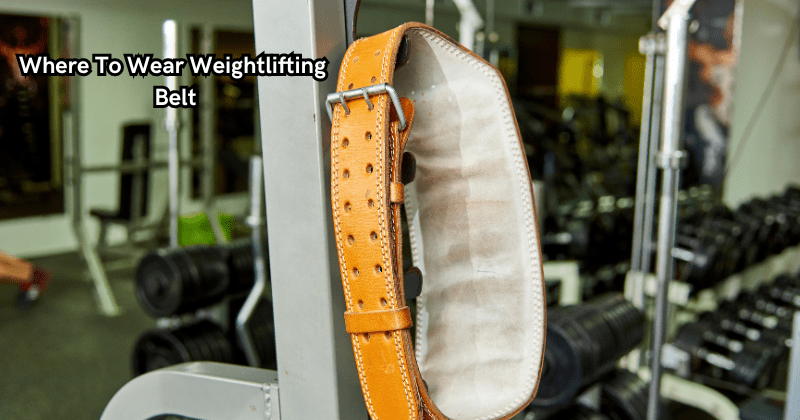A weightlifting belt is an essential gear for any serious lifter. It provides support and stability to your core while lifting heavy weights, allowing you to lift more weight and reduce the risk of injury. However, not all exercises require a weightlifting belt, and wearing one at the wrong time can do more harm than good. So, where should you wear your weightlifting belt?
In this guide, we will discuss the best practices for wearing a weightlifting belt and where it is most beneficial. We will also explore the different types of weightlifting belts and provide tips on how to choose the right one for your needs.
Why Wear A Weightlifting Belt?
Wearing a weightlifting belt may seem like an unnecessary accessory, but it has several benefits for serious lifters. The main purpose of a weightlifting belt is to provide support and stability to your core while lifting heavy weights. This can help you maintain proper form and prevent injury.
When you lift heavy weights, your intra-abdominal pressure increases, putting stress on your lower back. A weightlifting belt helps to counteract this pressure by providing external support to your core muscles, allowing them to work more efficiently.
Additionally, wearing a weightlifting belt can help you lift more weight. Stabilizing your core allows you to transfer force from your legs and arms more effectively, resulting in stronger lifts. This is especially beneficial for powerlifters and Olympic weightlifters.
Benefits of Wearing A Weightlifting Belt
Aside from providing support and stability, there are other benefits to wearing a weightlifting belt. One of the main benefits is that it can help prevent injury. As mentioned earlier, lifting heavy weights puts a lot of stress on your lower back. By wearing a weightlifting belt, you reduce this stress and decrease the likelihood of injury.
In addition, wearing a weightlifting belt can also improve your performance. Stabilizing your core and helping you lift more weight can lead to better lifts and improved overall strength. This is especially beneficial for competitive lifters always striving to increase their numbers.
Another benefit of wearing a weightlifting belt is that it can help you maintain proper form. When you are lifting heavy weights, it's easy for your form to break down and increase the risk of injury. A weightlifting belt can serve as a reminder to engage your core and maintain proper posture while lifting.
Where To Wear Weightlifting Belt
Now that we understand the benefits of wearing a weightlifting belt let's discuss where it is most beneficial to wear one. The general rule of thumb is to wear a weightlifting belt for exercises that put a lot of stress on your lower back. This includes:
Squats
Squats are a compound exercise that engages multiple muscle groups, including glutes, quads, and hamstrings. However, they also put a lot of pressure on your lower back due to the weight you are lifting. This makes it an ideal exercise to wear a weightlifting belt for added support and stability.
When wearing a weightlifting belt for squats, it should be positioned just above your hips. This will provide support to your lower back and help you maintain a neutral spine throughout the movement.
Also, it's important to note that wearing a weightlifting belt should not be used as an excuse to neglect proper form. It should only aid in maintaining proper posture and supporting your core muscles.
Deadlifts
Deadlifts are another exercise that puts a significant amount of stress on your lower back. They also engage your core muscles and require proper form to avoid injury. Wearing a weightlifting belt for deadlifts can provide additional support to your core and help you maintain proper form throughout the movement.
For deadlifts, the weightlifting belt should be positioned just below your ribs, around your abdominal region. This will help stabilize your core and prevent any rounding of your back during the lift.
Additionally, wearing a weightlifting belt can also help you generate more power and lift heavier weights during deadlifts.
Overhead Presses
Overhead presses, whether with a barbell or dumbbells, require a significant amount of core strength and stability. The weight is held above your head, creating tension in your lower back. Wearing a weightlifting belt for overhead presses can help support your core and prevent strain on your lower back.
For overhead presses, the weightlifting belt should be positioned just above your waistline. It should not be too tight but snug enough to provide support during the movement.
Clean and Jerk & Snatch
The clean and jerk and snatch are two Olympic weightlifting movements that require a significant amount of core strength and stability. The weight is lifted from the ground to overhead in one fluid motion, placing a lot of stress on your lower back. Wearing a weightlifting belt for these exercises can help stabilize your core muscles and prevent injury.
When wearing a weightlifting belt for clean and jerks or snatches, it should be positioned just above your hips. It should not restrict your range of motion but provide enough support to maintain proper form and prevent any rounding of the back.
Plus, wearing a weightlifting belt for these movements can help you lift more weight and improve your overall performance.
How To Choose The Right Weightlifting Belt
There are several factors to consider when choosing a weightlifting belt. First, make sure the belt fits snugly around your waist without being too tight. It should also have a width of 4 inches all around for optimal support.
Next, consider the material of the belt. Leather and nylon are popular options, with leather providing more rigidity and stability while nylon is more flexible and lightweight. Choose one that suits your personal preference and needs.
Additionally, pay attention to the buckle or closure system of the belt. A prong buckle offers a secure fit but can be more time-consuming to adjust, while a lever or quick-release buckle allows for easier adjustments but may not provide as secure of a fit.
Lastly, consider the level of thickness and padding in the belt. A thicker belt can provide more support and stability but may feel bulky and uncomfortable. On the other hand, a thinner belt may be more comfortable but may not offer as much support.
Ultimately, it's important to try on different weightlifting belts and choose one that feels comfortable and supportive for your specific needs and preferences.
Why You Should Add A Weightlifting Belt To Your Gear
Adding a weightlifting belt to your gym gear can provide numerous benefits, including reducing the risk of injury, improving performance, and aiding in maintaining proper form. By wearing a weightlifting belt for exercises that put stress on your lower back, such as squats and deadlifts, you can provide additional support and stability to your core muscles.
Moreover, wearing a weightlifting belt can also help you lift heavier weights by providing support to your core, allowing you to push through those challenging last few reps. This can ultimately lead to improved strength and muscle-building progress.
Additionally, wearing a weightlifting belt can serve as a reminder to engage your core and maintain proper form while performing compound exercises. It can also help prevent any rounding of the back, which can lead to injury.
Also, investing in a good quality weightlifting belt shows a commitment to your fitness journey and can help boost confidence in the gym. So, if you're serious about lifting heavy weights and reaching your fitness goals, consider adding a weightlifting belt to your gear.
Where to not use a weightlifting belt
While weightlifting belts can provide numerous benefits for heavy lifting, there are certain exercises where they may not be necessary or even recommended. For example, isolation exercises such as bicep curls or tricep extensions do not put significant stress on your lower back and may not require a weightlifting belt.
Also, some experts advise against wearing a weightlifting belt for exercises that require a lot of mobility, such as lunges or plyometric movements. The belt may restrict your range of motion and hinder your ability to perform the exercise properly.
Furthermore, if you have any pre-existing back conditions or injuries, it's important to consult with a medical professional before using a weightlifting belt. In some cases, wearing a belt may exacerbate the injury and cause further damage.
Ultimately, it's important to use your judgment and listen to your body when deciding whether or not to use a weightlifting belt for certain exercises. If you feel discomfort or restriction in your movement while wearing the belt, it may be best to remove it for that particular exercise.
And remember, a weightlifting belt should never be used as a substitute for proper form and technique. It is simply a tool to aid in supporting your core and preventing injury during heavy lifting. So use it wisely and only when necessary.
Tips for Properly Using a Weightlifting Belt
When using a weightlifting belt, it's important to keep a few tips in mind to ensure its effectiveness and safety. First and foremost, always make sure the belt is properly positioned just above your waistline, as mentioned earlier, for specific exercises.
Next, avoid wearing the belt too tightly, as this can hinder your breathing and restrict movement. It should be snug but not so tight that it becomes uncomfortable or interferes with your performance.
Additionally, it's important to engage your core muscles while wearing a weightlifting belt. The belt is meant to provide support, not do all the work for you. By actively engaging your core, you can enhance the effectiveness of the belt and maintain proper form.
Another tip is to warm up properly before using a weightlifting belt. This will help prepare your muscles and prevent any muscle strains or injuries.
Lastly, remember to take breaks from wearing the belt during your workout. It's important not to rely on the belt too heavily and allow your core muscles to work without support for some exercises.
By following these tips, you can ensure that you are using a weightlifting belt properly and safely, allowing you to reap its benefits while minimizing any potential risks. So, choose your belt wisely, use it correctly, and watch your performance improve in the gym.
FAQs
How should a weight-lifting belt be positioned for optimal support?
For optimal support, a weight lifting belt should be positioned around the natural waist, slightly above the hips and below the ribcage. This placement allows the belt to provide maximum support to the lower back while also allowing you to engage your core fully. When securing the belt, take a deep breath and tighten it to a comfortable level that still allows you to take in air and brace your core muscles effectively.
What are the differences between leather belts and nylon belts for weightlifting?
Leather belts are renowned for their rigidity and durability, offering substantial support, especially needed during heavy lifting. Their thick construction is ideal for maintaining posture and stability under significant loads. On the other hand, nylon belts are lighter and more flexible, providing a comfortable option for movements requiring a greater range of motion or for individuals who prefer a less rigid support. The choice between leather and nylon lifting belts often comes down to personal preference and the specific requirements of the lifting routine.
How do lever belts compare to traditional pronged weight belts?
Lever belts feature a lever closure system that allows for quick and easy adjustments in tightness, offering a consistent fit every time the belt is worn. This can be particularly beneficial for lifters who require varying levels of support between different exercises or sets. Traditional pronged weight belts, while they may take a bit longer to adjust, offer a high degree of customization in fit, as the tightness can be finely adjusted hole by hole. Both styles provide excellent support, but lever belts offer convenience and speed in fit adjustment.
What is the correct way to wear weightlifting belts to enhance performance safely?
To wear weightlifting belts correctly and safely, start by positioning the belt around your waist, ensuring it sits just above the hips and covers the lower back and abdomen without impinging on the ribs or hip bones. Before tightening the belt, take a deep breath to expand the abdomen, then secure the belt snugly around the expanded waist. This method helps create intra-abdominal pressure, which supports the spine during lifting. It's important to avoid overtightening the belt, as this can restrict breathing and movement, potentially leading to discomfort or injury.
Conclusion
In conclusion, a weightlifting belt can be a valuable tool for any serious lifter looking to improve performance and reduce the risk of injury. With various options in material, size, and closure systems, there is a weightlifting belt suitable for everyone's needs and preferences.
However, it's important to remember that a weightlifting belt is not a magic solution and should be used with proper form and technique. It should also not be relied upon for all exercises, as there are certain movements where it may not be beneficial or even recommended.
By following the tips mentioned above and using a weightlifting belt wisely, you can enhance your lifting abilities and reach your fitness goals more effectively. So don't hesitate to add a weightlifting belt to your gear and see the difference it can make in your gym routine. Happy lifting!

Click Here to Learn More About the Rip Toned Weightlifting Belts and get the most out of your belt.

